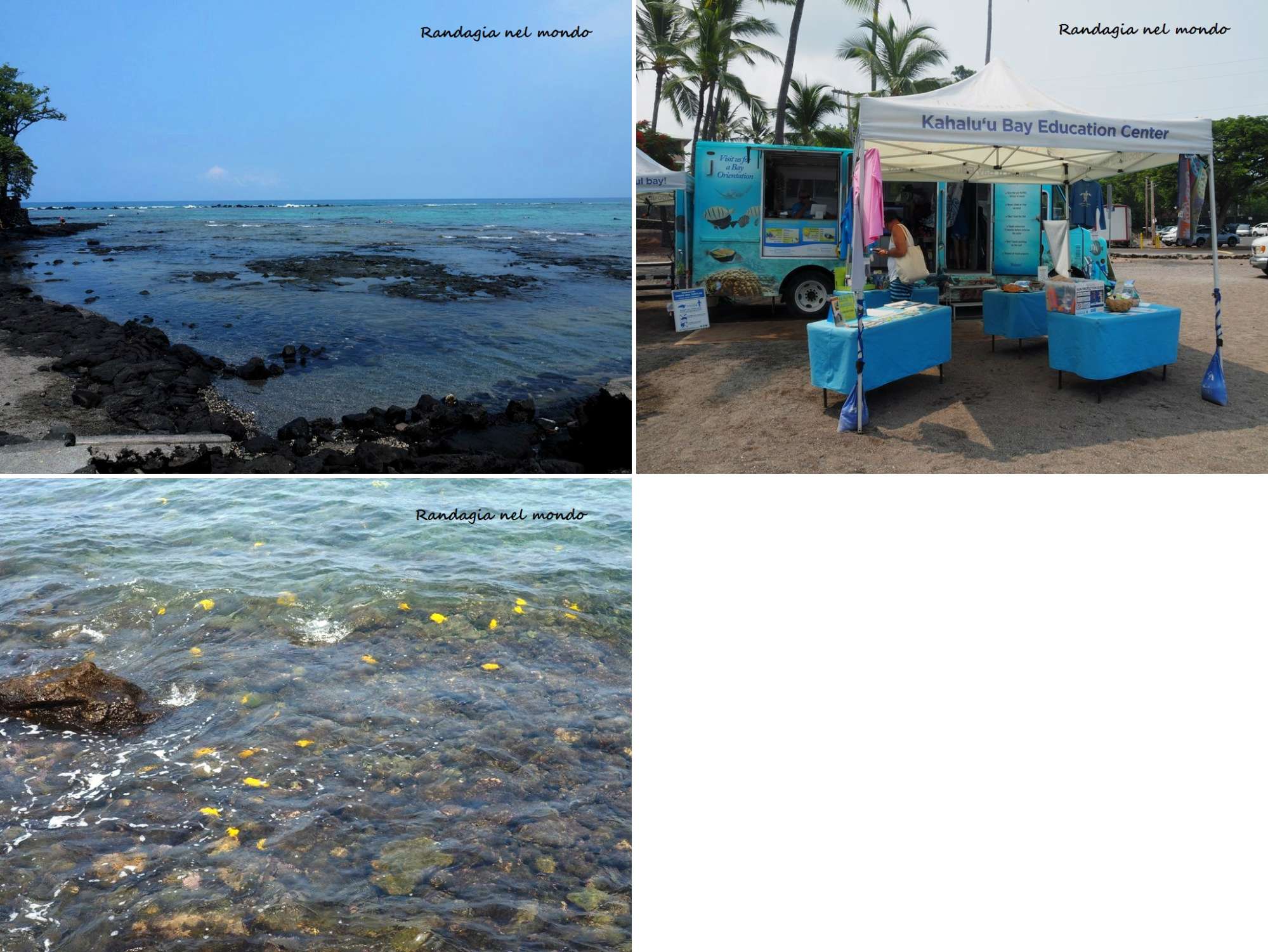HAWAII – Big Island (from July 28th to Aug. 3rd 2018)
Car Rental
469.61 Eu, with Alamo, booked through AutoEurope, with taking over Hilo and returning to Kona (surcharge of 58 USD). A medium-sized car, at the end of May I did not find any more any smaller ones. Nissan Altima, never heard before, with a really large trunk. Some scratches, photographed by me during the assignment phase of the vehicle, and no objection at the return.
Sleep
I chose to sleep 3 nights in Hilo (178.49 Eu) and 3 nights in Waikoloa (167.19 Eu). Private rooms booked with Air BnB, with access to the kitchen, and bathroom reserved for me. Wonderful experience living in a real house, especially in Hilo, in a simple and colorful wooden house, with a wonderful host, Pua, half Hawaiian, native language teacher, always ready to share eggs, homemade cookies, fruits of the garden, and who has taught me a lot about local culture and politics.

In Waikoloa, on the contrary, the very gentle hosts were Americans, as it happened on the other islands. It was nevertheless interesting to interact with them, because I do not really know anything about the Yankee culture, and, to be honest, they were quite critical about it. The house was really tidy and perfect, in a residential area full of beautiful little villas. Waikoloa is about 6/7 km from the sea, always sunny and windy, and above all, as I had learned from the Tripadvisor forums, far from the polluted air in Kona. I remind that from mid-May until the end of August 2018, due to the eruption of Kilauea, most of the west side of the island, downwind, was plagued by vog. It seems however that Kona is subject to this type of problem even in the case of smaller eruptions

Eat
In Hilo there is a daily farmers market that I recommend because fruits and vegetables are very cheap compared to supermarkets. In the airport area, however, there are some huge stores, Safeway and similars. There is also a Ross, Dress for less, where you can find several occasions. The west side of the island (Kona) is more expensive, in any case in Waikoloa there is a small, well-stocked Times
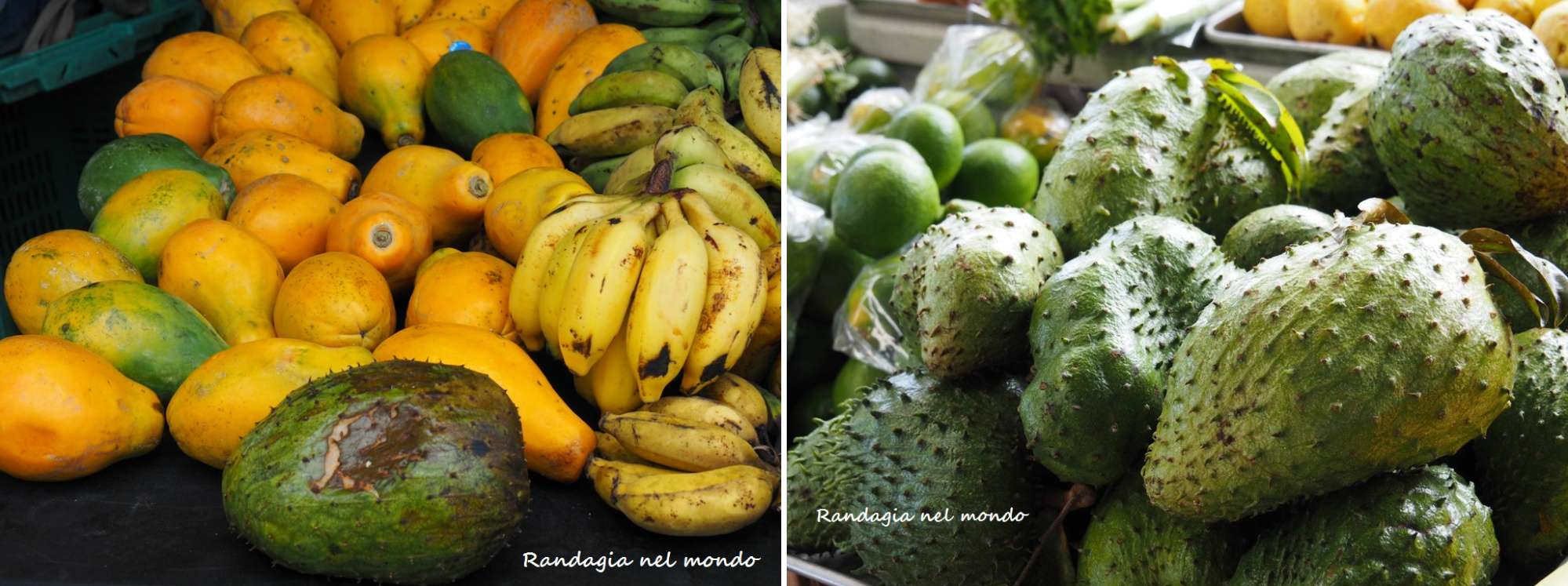
Excursions
Hawai’i offers a lot of excursions of all types, just have a quick search on Google, the problem are costs. I could not visit the Volcano National Park due to the eruption. Any activity must be booked a couple of days. While I was in Hilo, I could not find a boat tour to see lava flow entering the sea, so I adapted to the helicopter (the price was the same, 250 USD). From Kona my same excursion costs at least 100 USD more. The tour is offered by several agencies, prices are similar. They fly above the lava flow, then the coast side where this goes into the sea, then a wooded area with several waterfalls, and the coast surrounding Hilo. The currents of hot air emanating from the lava, clashing with the cooler ones above, created amazing pressure drops, it seemed at times to be on the roller coaster. At first I was almost frightened by the jolts, but after having looked at the pilot, who continued to operate as if nothing had happened, I got reassured
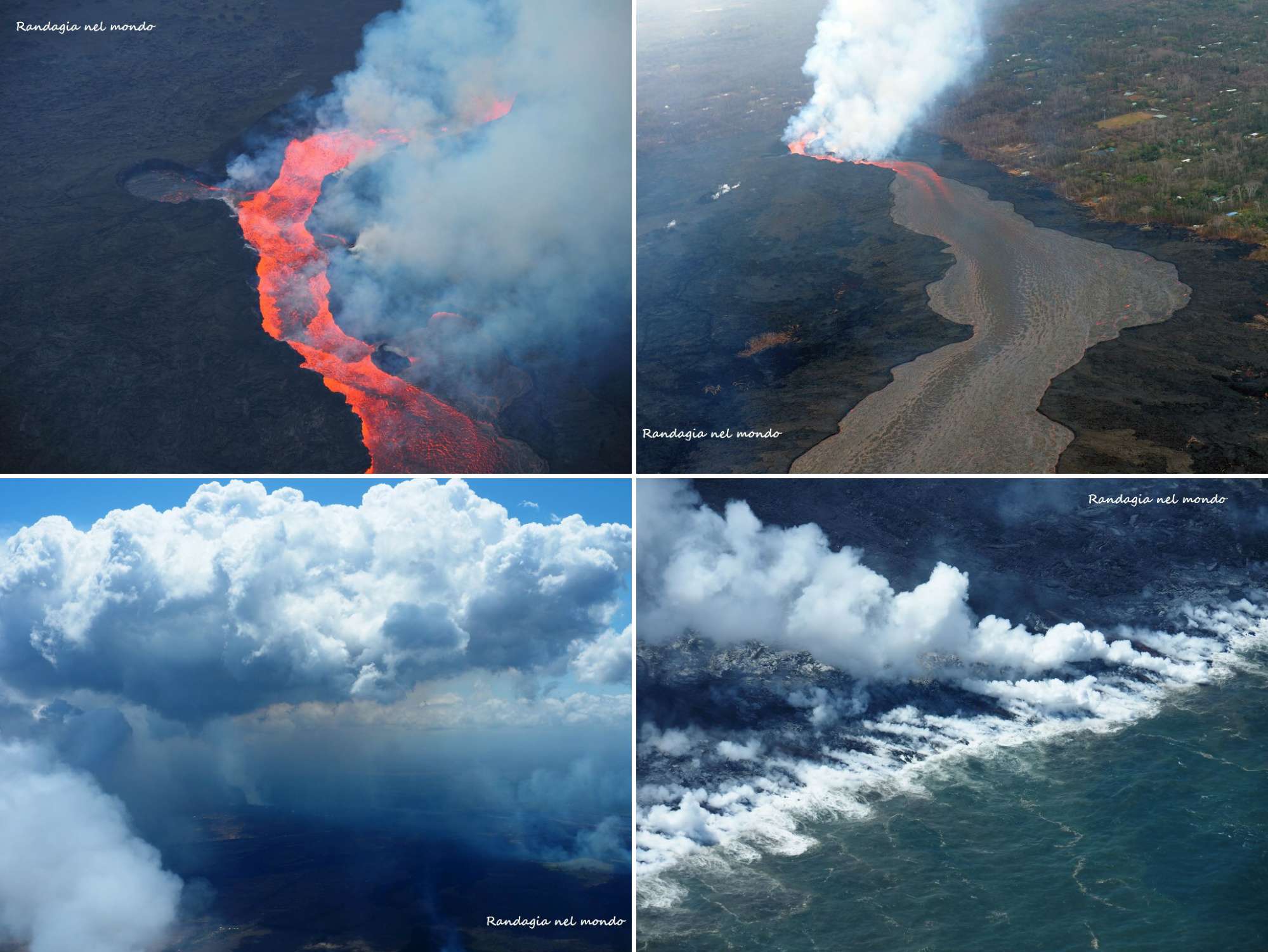
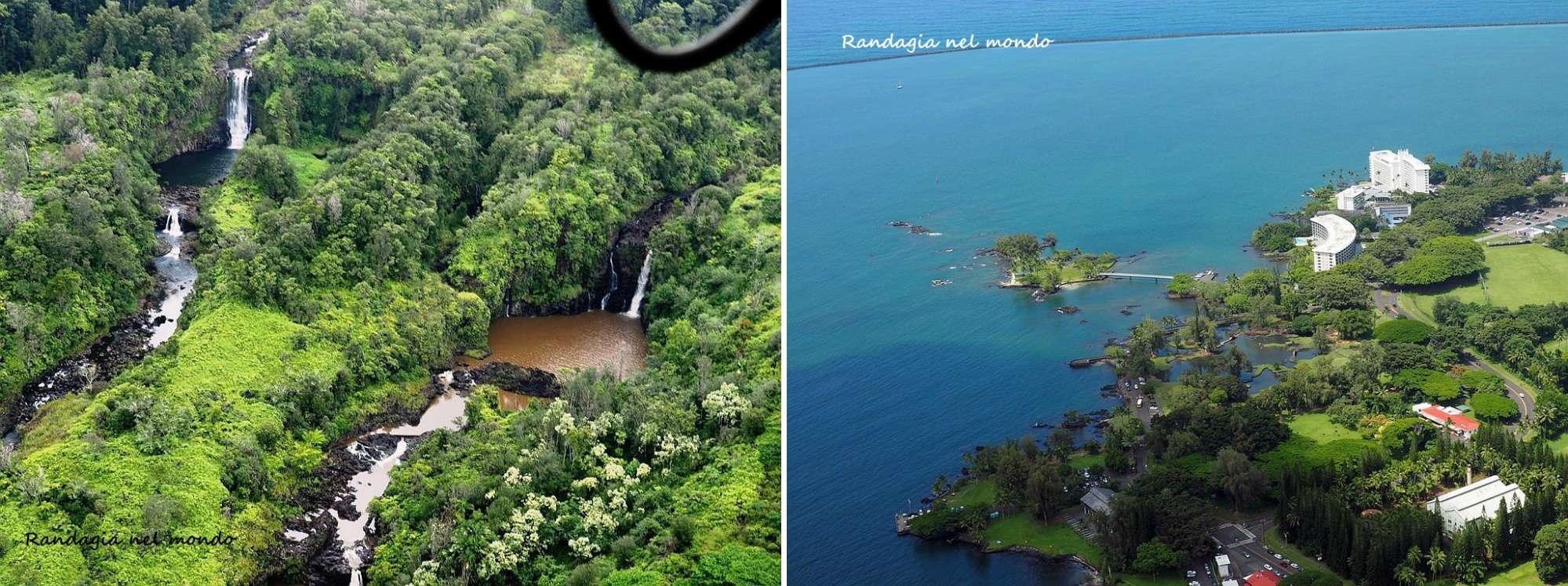
What to see
The island is very large, I think it is essential to divide the overnight stayss between the east coast (where is the Volcano National Park, and amazing black beaches, the Waipio and Pololu Valley, Onomea Bay, Keaukaha Beach Park), and west, with some beautiful white sand beaches (Hapuna, Waialea, Anaeho’omalu, Kahalu’u), which compete for the title of the best in the archipelago along with those of the south east of Oahu. The most interesting peculiarity of Hawaii is the sudden and spectacular variety of landscapes. Hilo and its surroundings are covered by lush rainforest

Hawi and the far north are an immense prairie of tall green grass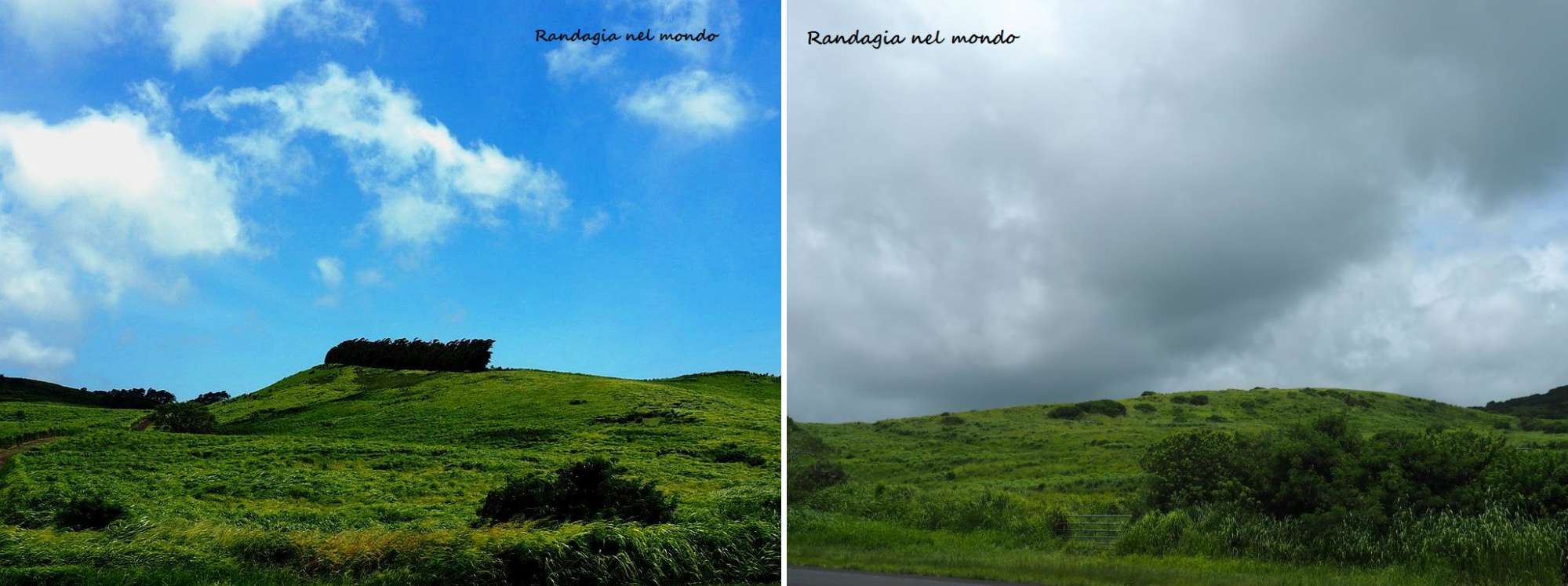
Kona and the whole western side is a stretch of white sand and blue sea, with a dark hinterland of lava and volcanic stone, and a few dry shrubs.

I could not complete the circumnavigation of the island by car, so I missed two beautiful beaches to the south, which are the Punaluu and the Pepeekoa (green Beach).
Volcano National Park was closed at the time of my visit. From Pahoa, however, I saw an impressive cloud of smoke looming over the town, which turned into a huge fireball in the evening. The photos were taken in the church square, it was impossible to continue beyond, the 132 towards the Lava Tree Park was barred.
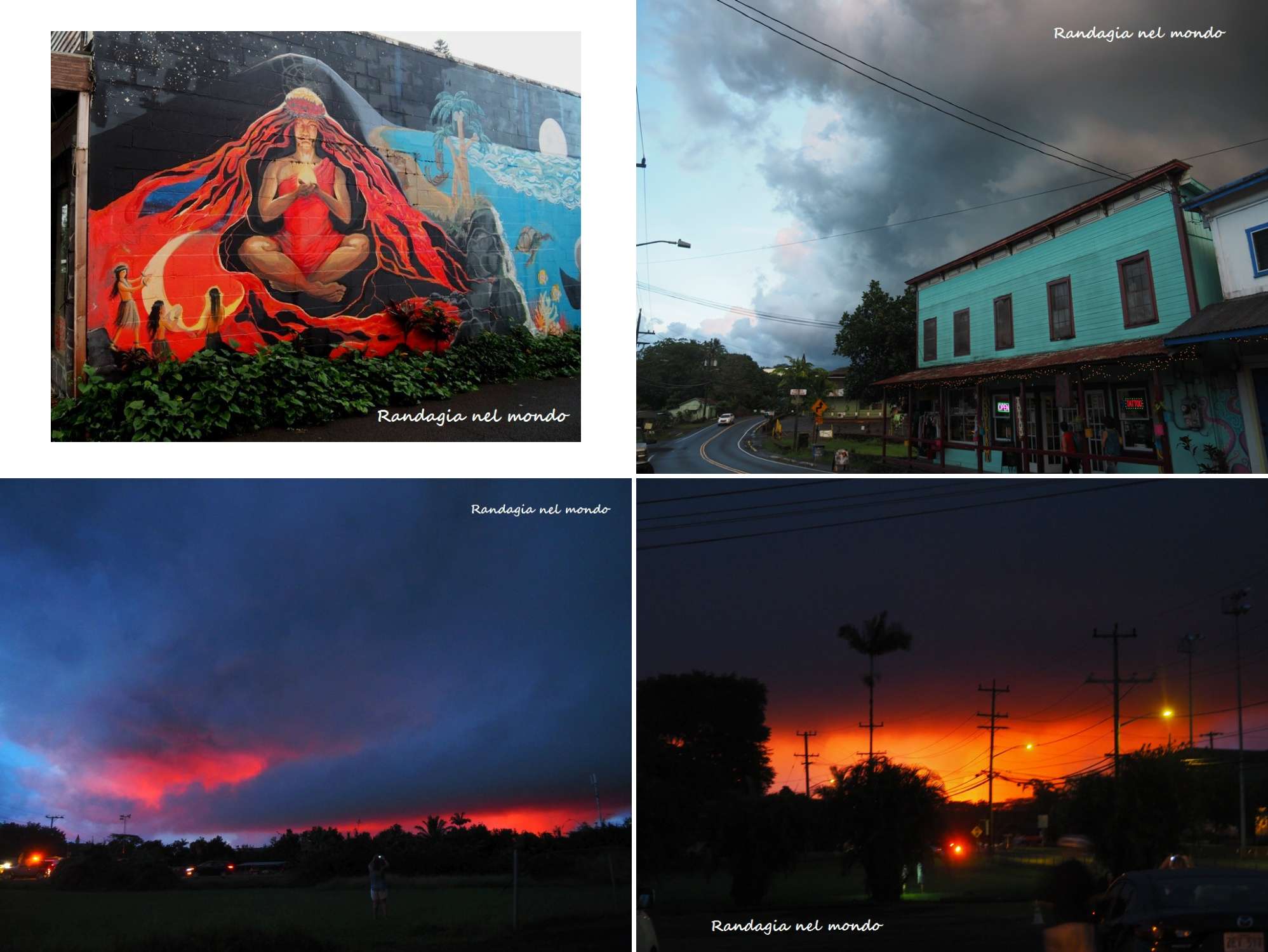
To reach Pahoa I drove at 30 km/hour speed, in a rather disquieting scenario, under a pouring rain, a completely uneven section of road where steel plates replaced the collapsed asphalt, amid clouds of sulfurous nauseating steam. I was more afraid of this little stretch than on the helicopter. I then headed to the sea, to Kalapana, where I followed a part of coastal stretch, then stopped and came back just before the road block, in the area where the lava enters the sea (then seen from the helicopter)
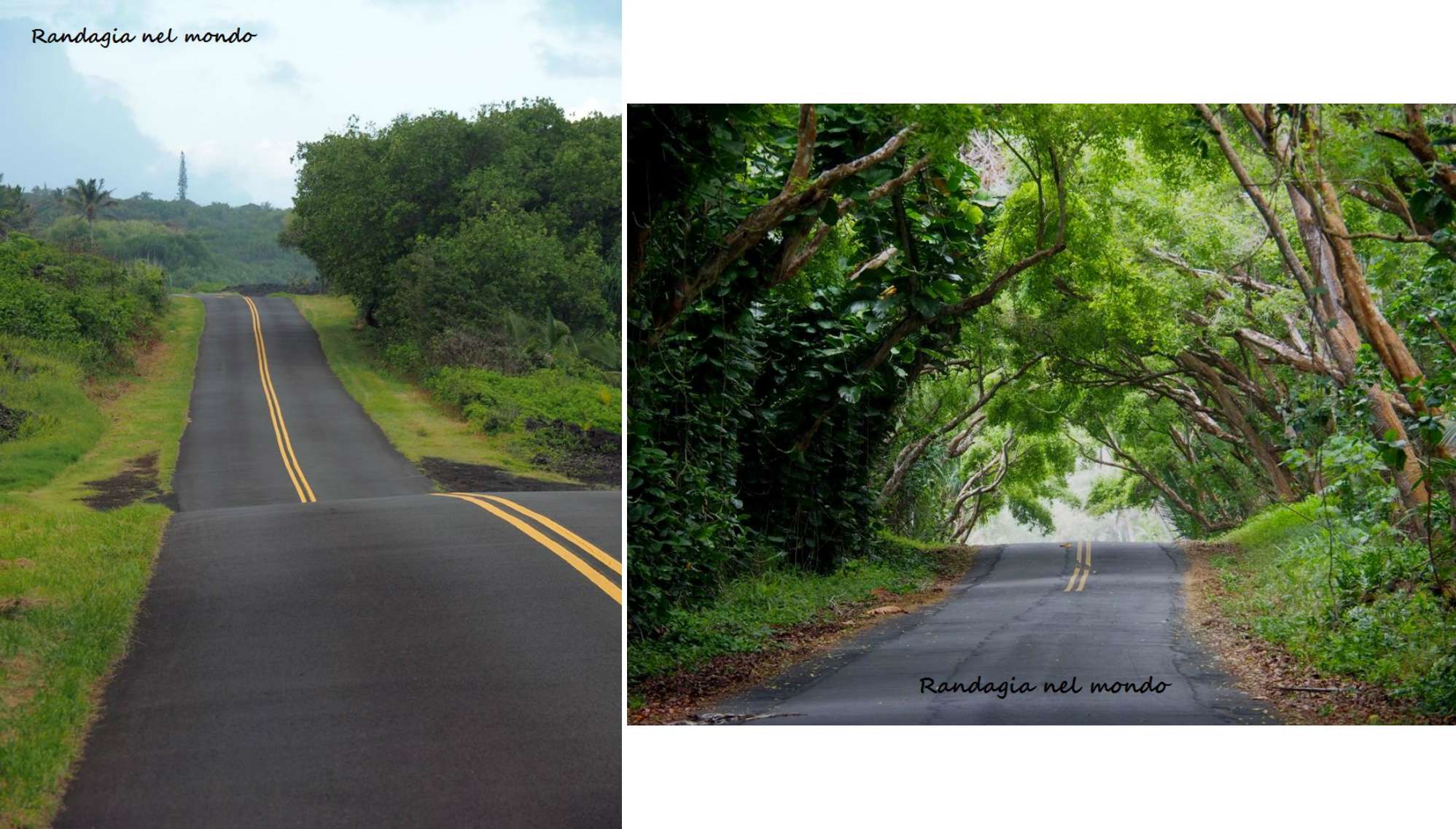
Hilo is a pleasant town, with nice wooden buildings, although the shops in the central street are a bit repetitive, travel agencies and souvenir shops …
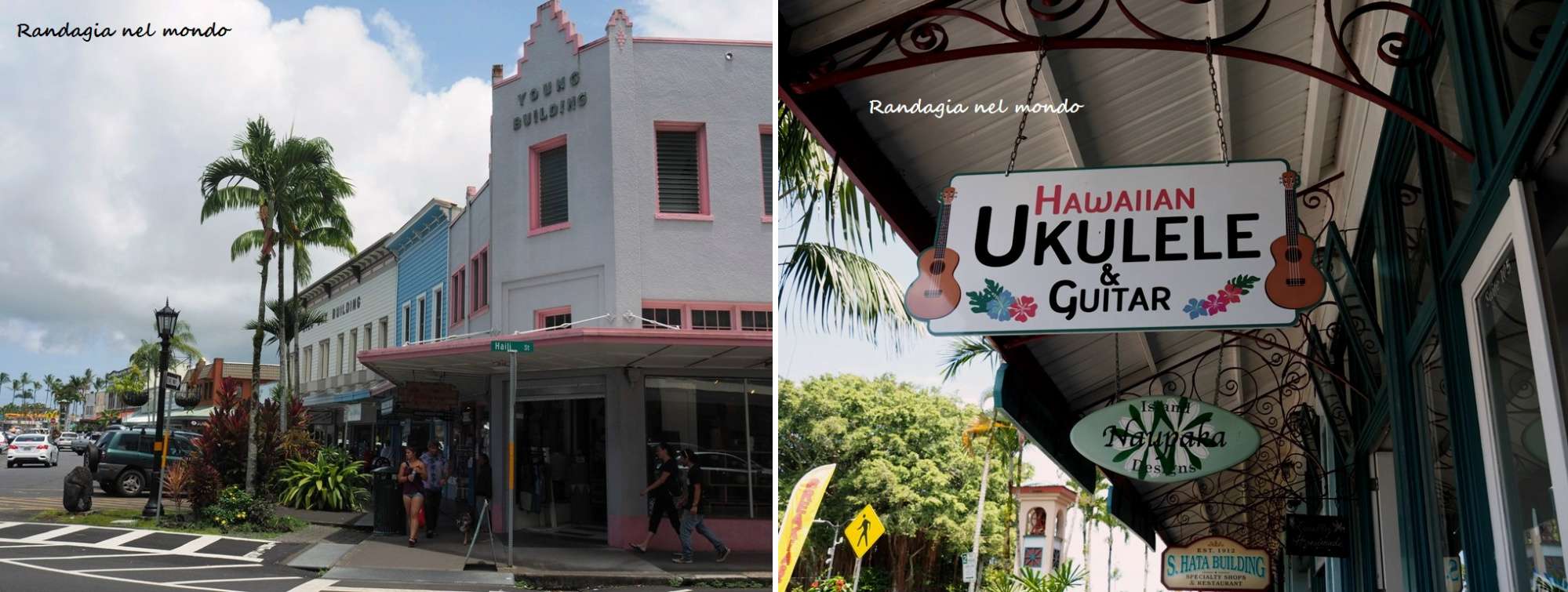
The Lili’uokalani gardens are a relaxing oasis for packed lunches, rich in shade and meadows of soft grass where you can lie down.

Continuing south, there are some nice marine parks, like Keaukaha Beach Park, where rocks create natural pools where you can swim without danger, in a very transparent water.
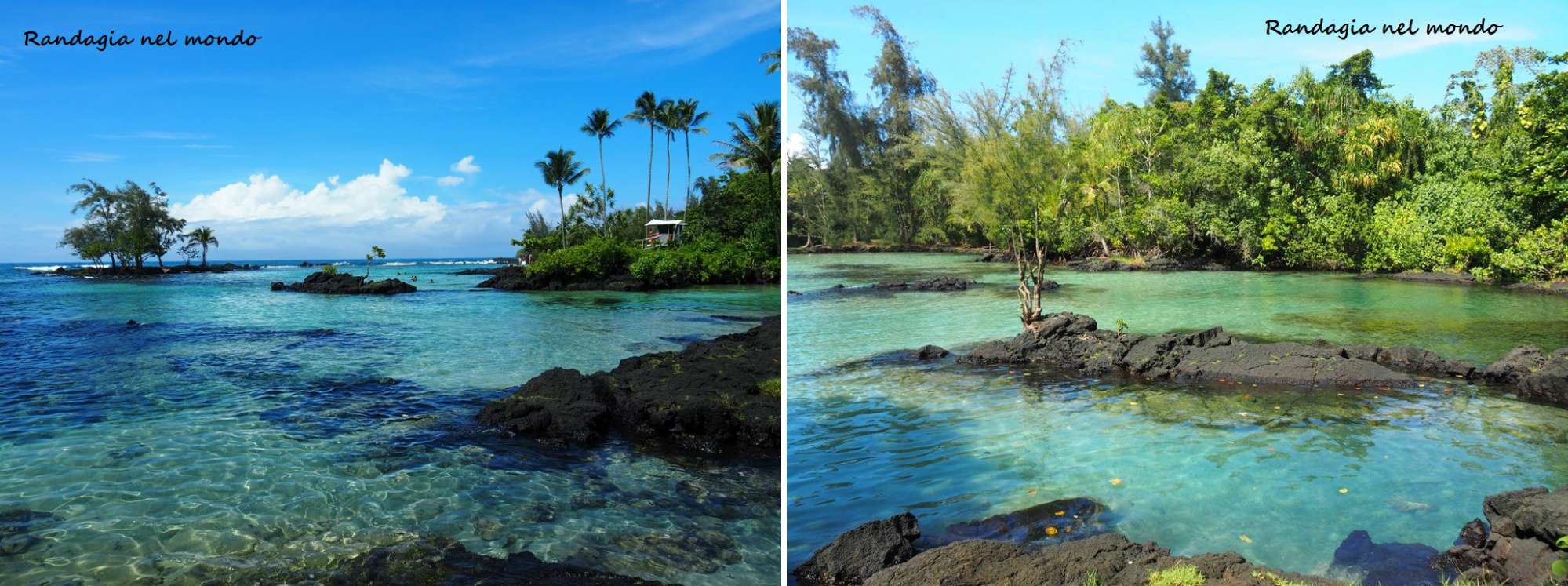
A spot which has a special place in my heart, although not particularly well known, is Onomea Bay, in Papaikou, a few minutes walk from my Air BnB, on a road which winds through thick vegetation, meeting some small waterfalls, and crossing the Hawaii Tropical Botanical Garden (from the street the access is not allowed, there are some grids, it is necessary to transit from the official entrance). It is a small inlet of black rock, with a sea difficult to deal with, but which conveys an immense sense of serenity and peace. A couple of fishermen and I, in perfect silence, broken only by the roar of the waves and the songs of the birds.
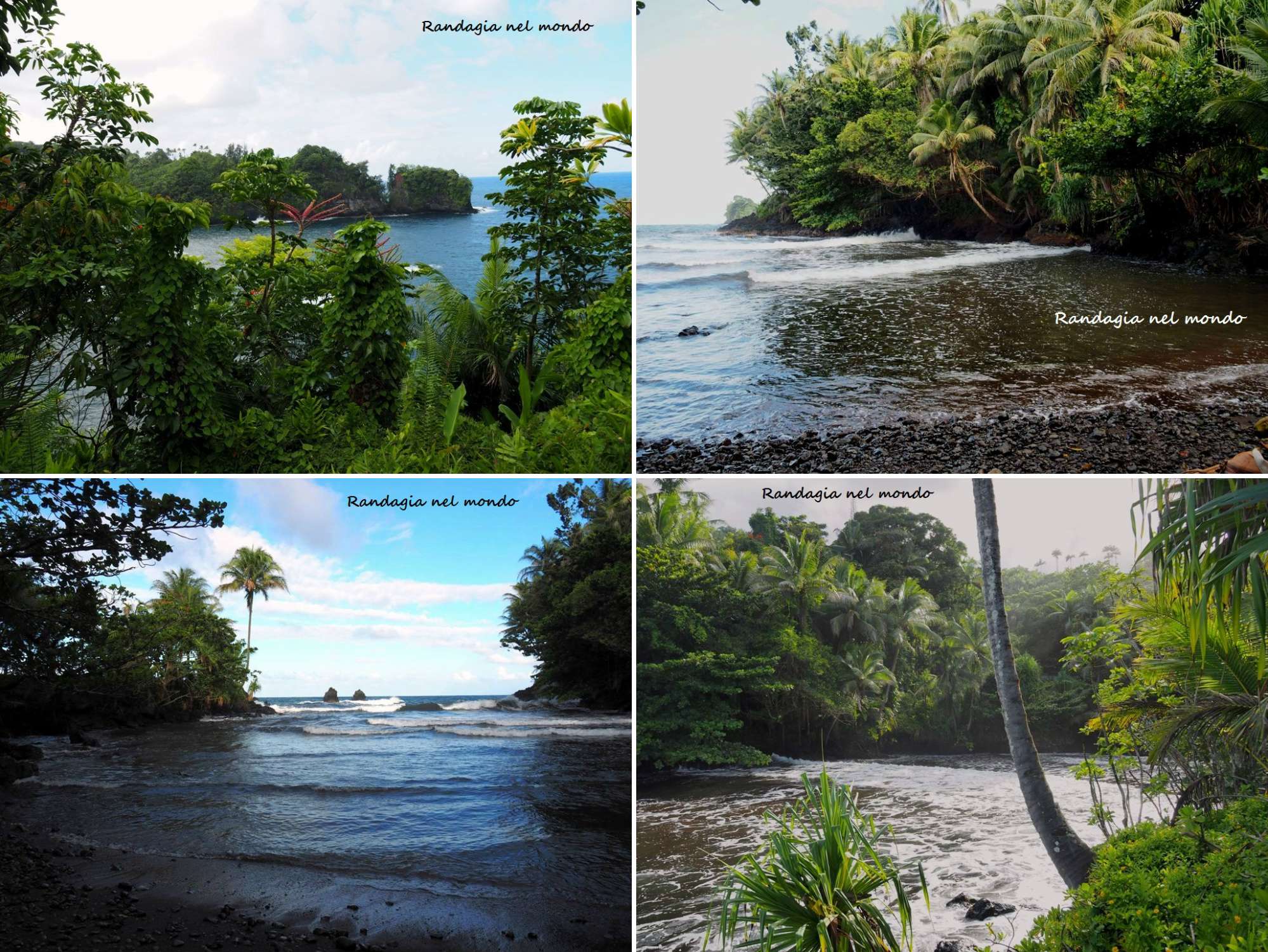
Another noteworthy stop, going northwards, is at Laupahoehoe, where I see some tents that seem to belong to tourists, and not to homeless, arranged on a field of a blinding green. But there is no sand, only rocks, and even here the sea is not the most peaceful
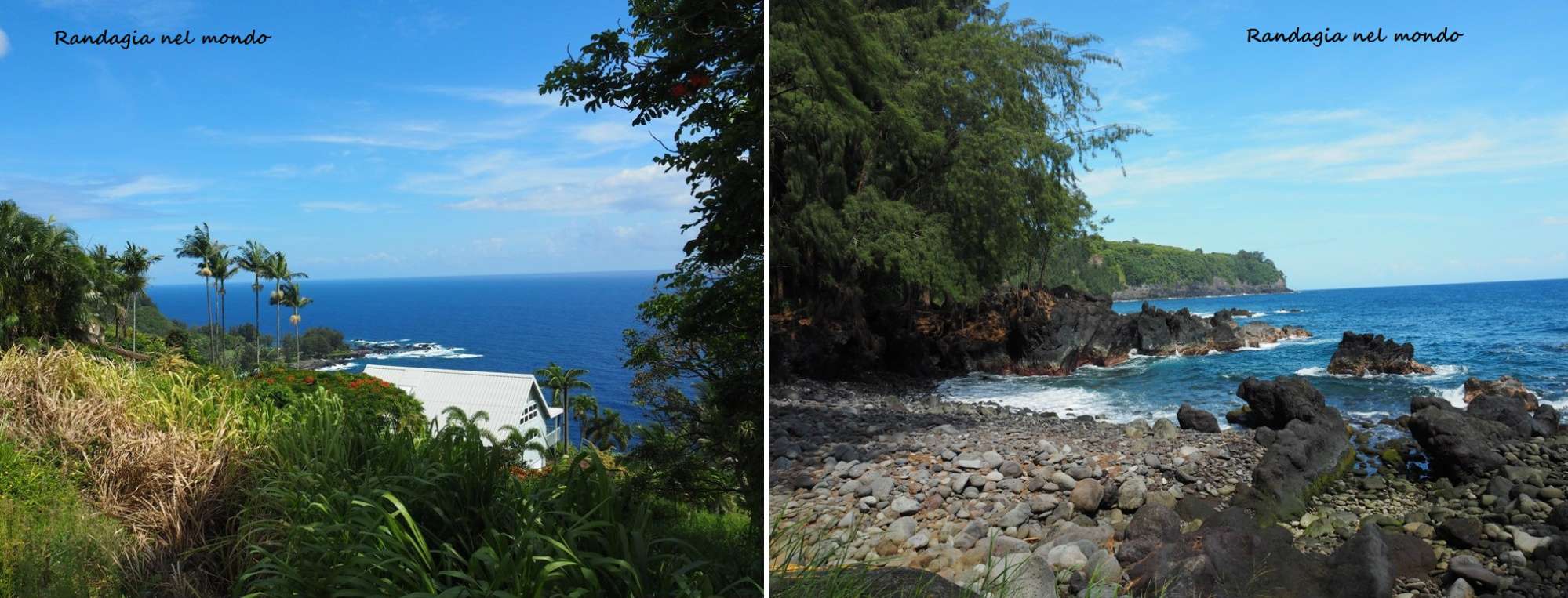
The pearl of the east side, however, are the massive cliffs of the Kohala Forest Reserve, bounded by Waipio Beach to the south and Pololu Beach to the north. They are very similar, the Waipio is the best known, and in my opinion even the most beautiful, but the walk to get there is longer, steeper and congested with cars (only 4WD), traffic jams are not rare, because vehicles can not pass simultaneously in both directions in some spots, and so they get stuck. After the descent, always following the road without crossing the meadows, (which are private property), you reach the beach, very shaded. The side waterfalls seem much closer than they actually are, I tried to reach one and then I gave up.


Hawi is a charming micro village with a few bars and some colourful shop, already set in a completely different landscape from the one left a few meters before in Pololu. No more trees and forest, just a huge stretch of bright green grass.
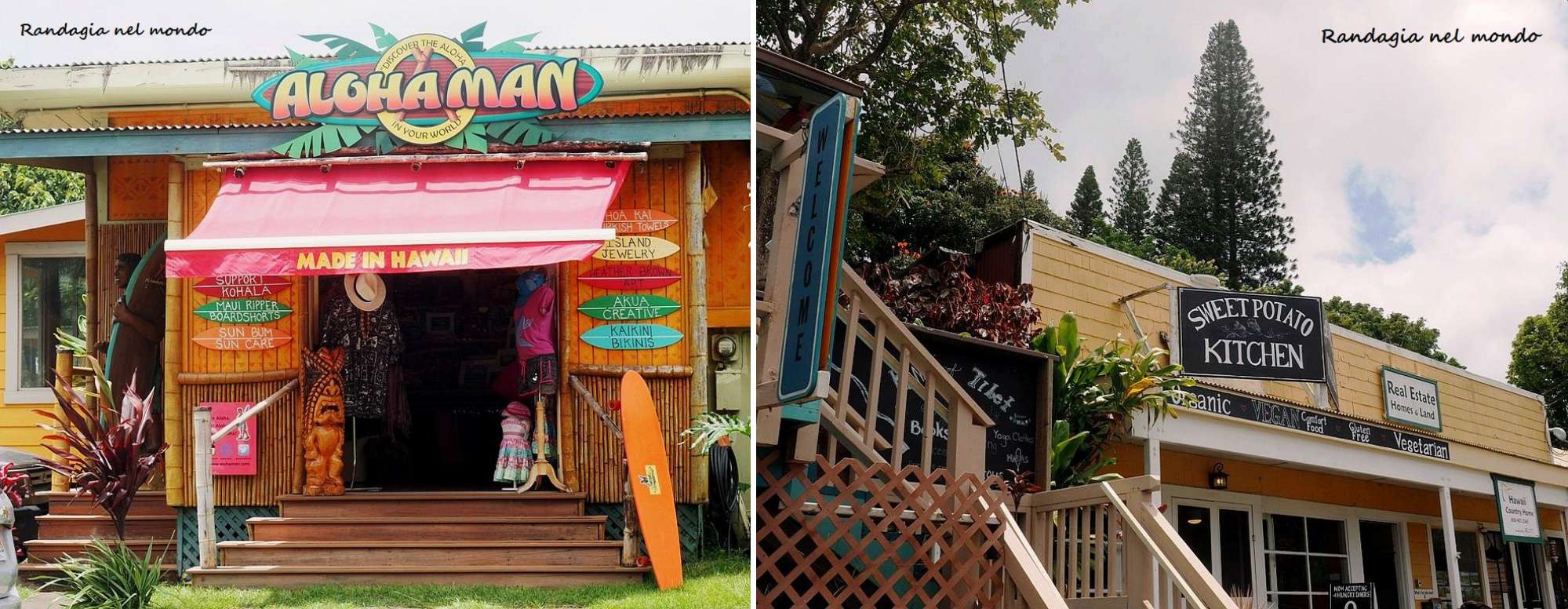
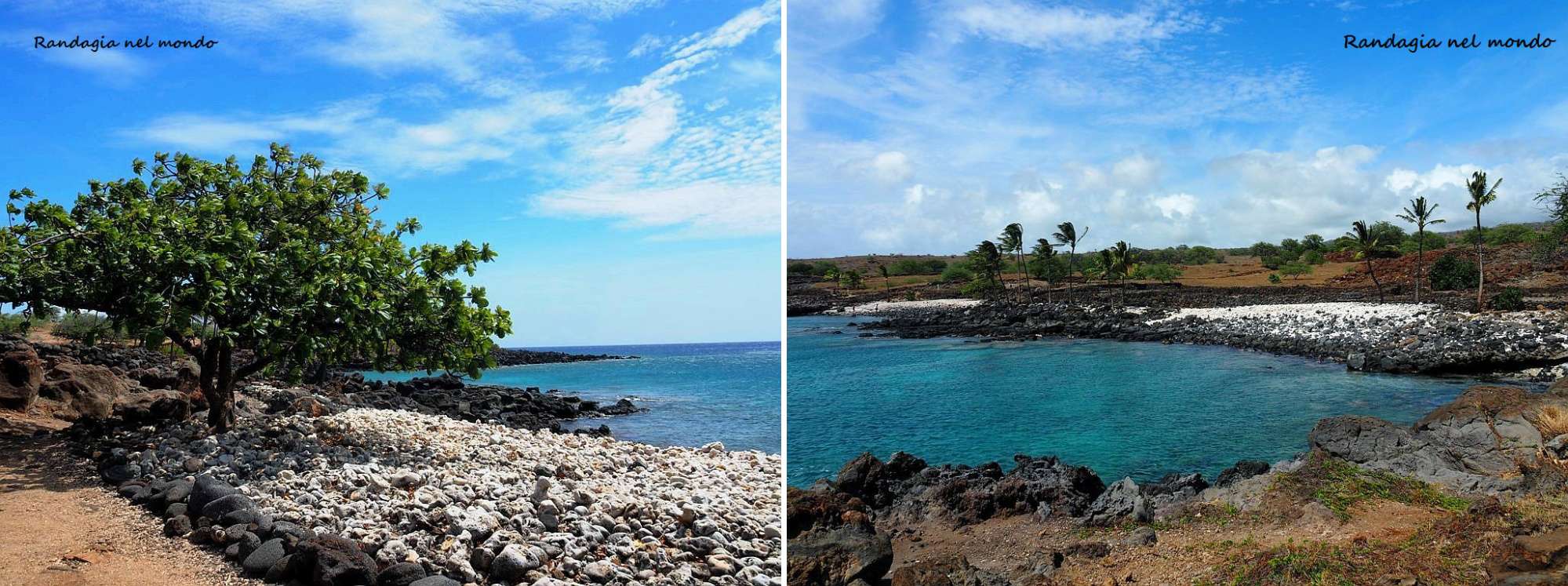
Moving from Hilo to Waikoloa I flanked the entrance to Mauna Kea National Park. Because of the inadequacy of my car I had not even thought of planning the ascent to the volcano, access to no 4WD cars is forbidden. It is the tallest mountain on earth, considering the base that is more than 5000 meters below sea level. I stop for a moment to take some pictures on this barren plateau, scourged by the wind. The colours of the landscape remain constant when the descent towards the west coast begins.
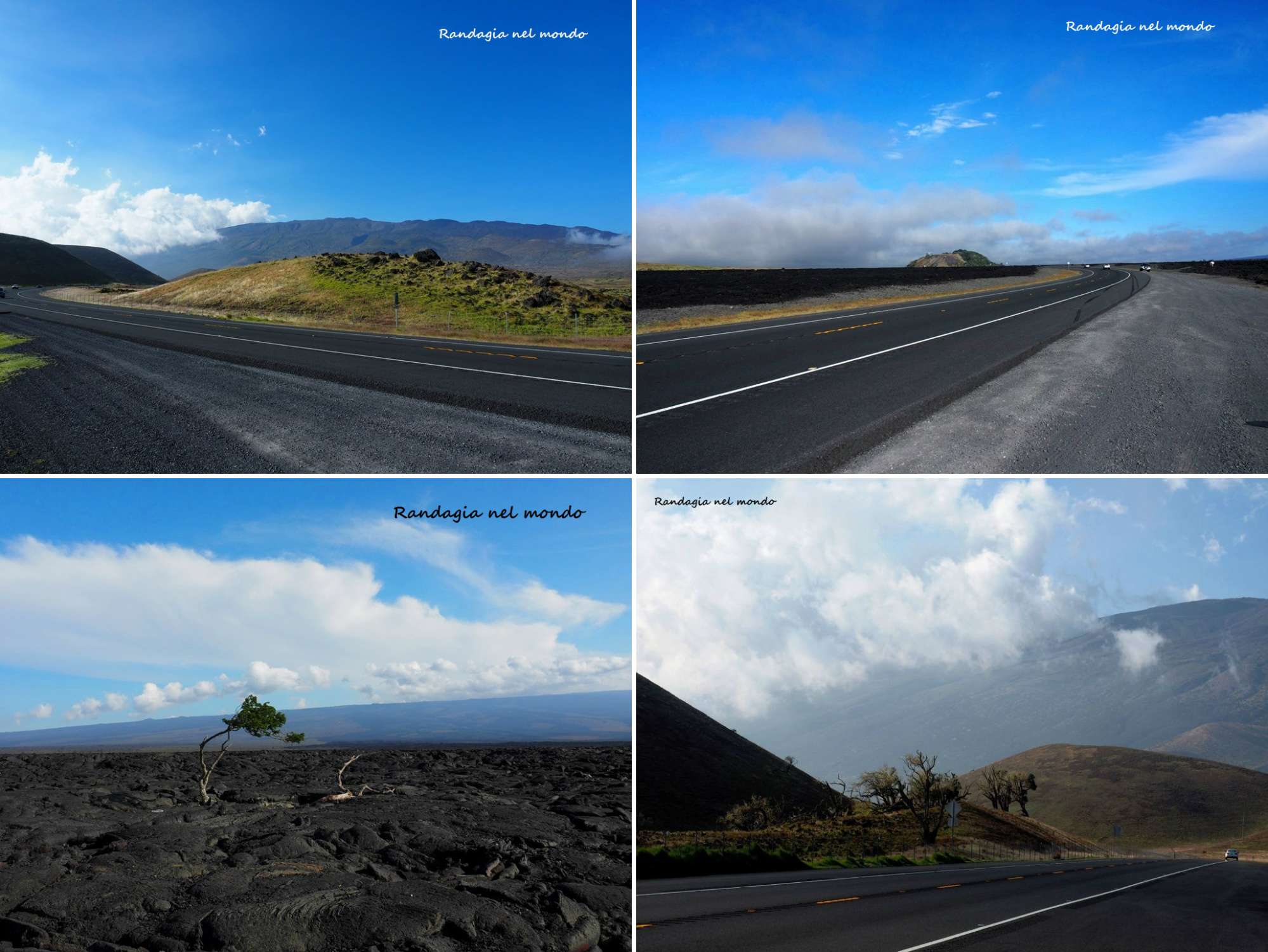

Hapuna Beach is Hawaii’s most famous white beach and is packed with visitors on the grassy shady areas with picnic tables. It seems people here do not really like staying in the sun because in the two times I’ve been there it was a challenge to put a beach umbrella and hope it would stay at its place, because of the wind.

However, walking southwards there are fewer and fewer people. Going further, I reached other small beaches with black/white stones, really curious.
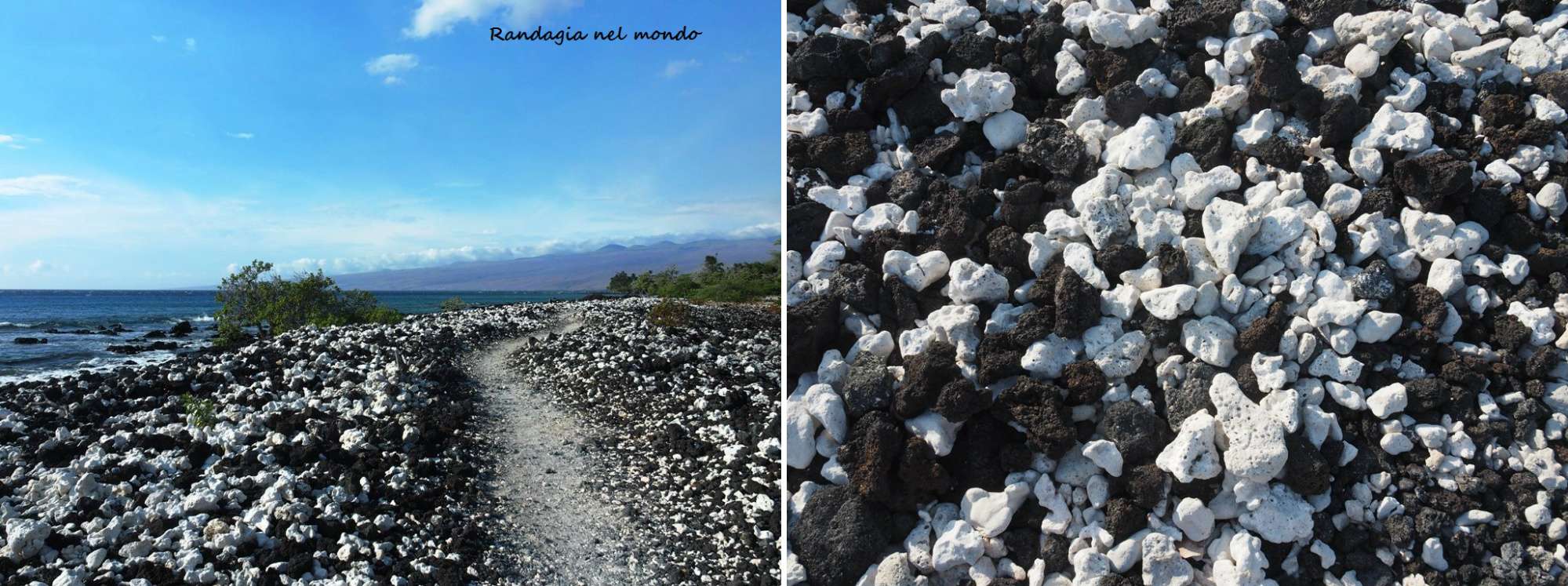

Next, the Anaeho’omalu Beach, another beautiful white beach surrounded by a complex of luxury condominiums, with a quite facilitated access to foreign visitors, however

Throughout the area mentioned above, and including all the east coast, from Hilo to Hawi, despite the eruption of the volcano, the conditions of the sky were perfect, clean air and no trace of vog, a particular species of air pollution formed by the contact between the sulfur oxides and the atmosphere. Moving instead along the coast towards Kona I start to notice a sort of gray cape wrapping around the landscape, and soon the sky turned gray. No bad smell, however.
Kahalu’u is the southernmost point I reached on the west coast, the beach is nothing special but snorkeling here is appreciable, although obviously the multitudes of colored fish tend to stay away from where the maximum crowd is concentrated . How to blame them, moreover, I noticed real bad and wild behaviors, people who, as soon as they noticed a fish, began to follow and chase it. The worst were all Asian, anyway …. Some stands on the beach sell organic solar products whose chemical composition does not damage the reef, and provide information on the habits of marine life, as well as indications for its respect
